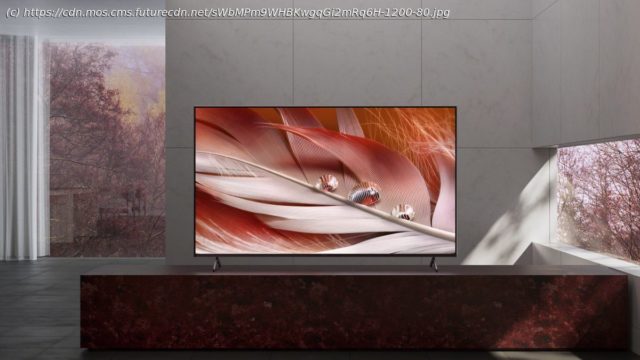The Sony X90J offers nearly everything we’d want from a mid-range 4K LED-LCD TV. It has some issues, but largely this is a fantastic TV that most folks will absolutely love.
The Sony X90J is nearly everything we’d want from a mid-range 4K LED-LCD TV. For the money, there are few TVs that can match it in terms of picture quality and feature set, making it top of its class for mid-range models. Honestly, though, we kind of saw this coming. Last year’s Sony X900H/XH90 was one of the best TVs of the year for all of the same reasons, and now Sony’s made it even better with its new Cognitive Processor XR that offers incredible upscaling and contrast control. We like it so much because it’s a native 120Hz TV with two full-spec HDMI 2.1 ports for the Xbox Series X and PS5, Variable Refresh Rate, and Auto Low Latency Mode, plus it uses a full array panel with local dimming for better black levels. Setting it up is easy and the TV uses the new Google TV platform that puts recommended content front and center. There are still a few lingering issues with setting up a new console on the TV – as well as some issues of how the TV looks in broad daylight in a bright room and off-axis viewing – but the Sony X90J succeeds in delivering stellar performance for a reasonable price. The Sony X90J is part of the Sony TV 2021 collection that includes the new A90J and A80J OLED TVs, plus the X95J and X80J 4K LED-LCD TVs. The X90J, reviewed here, is the middle child of the lineup and offers many of the best features of the high-end TVs minus the color sensor of the Z9J or the X-Contrast Pro of the A90J OLED. The good news? It’s much, much cheaper than either of those two. In terms of screen sizes and pricing, here’s what you’re looking at: So where does that put the Sony X90J compared to the competition? Somewhere right in the middle. It’s obviously not as affordable as the TCL 6-Series QLED that only costs around $649 for a 55-inch screen size, but it’s also not nearly as expensive as some of the 8K TVs we’ve seen come out this year like the new Samsung QN900A. It’s therefore right in the middle alongside the Samsung QN90A and LG C1 OLED that offer a higher peak brightness and better black levels, but only the Sony X90J comes with the content-first Google TV. The wild card here, however, is the new Sony X95J. It’s the step up above the X90J that offers X-Anti-Glare technology, higher brightness and better contrast. It’s slated to be much more expensive than the X90J – which is why we mostly would recommend this TV to friends and family over the X95J – but scrutinizing cinephiles might want to hold out until they can scrape the money together for the X95J instead. Because it’s a full array LED-LCD TV with local dimming, the Sony X90J isn’t as slim as the company’s OLED TV lineup – but it’s certainly not unattractive either. The front of the TV has a relatively thin bezel – though it doesn’t offer the edge-to-edge picture that some other 4K TVs do – and two thin legs. The legs themselves easily slide into position near the outer edge of the TV and do a great job of stabilizing the screen. Spin it around to the side and you’ll see that the Sony X90J isn’t exactly the slimmest screen on the market, but it uses the extra space to its fullest potential. Inside the TV is a full array panel with local dimming, plus a rock-solid sound system with two sound positioning tweeters on the sides of the TV and down firing woofers. Spin it all the way around to the back and you’ll find your typical port selection: here you’ve got four HDMI ports (two of which support 4K/120 and one is eARC compatible), plus ethernet, digital optical audio out, auxiliary and an RF tuner. You’ve also got two USB ports there. While we wish all four ports would be HDMI 2.1 compatible, having two ports will at least allow you to connect both a PS5 and Xbox Series X simultaneously for dual 4K/120Hz gameplay, though, plugging it directly into HDMI port 4 isn’t enough – you’ll actually have to go into the settings -> Channel & Inputs -> External Inputs -> HDMI signal format -> HDMI 4 -> Enhanced format.






